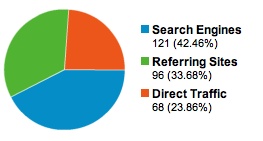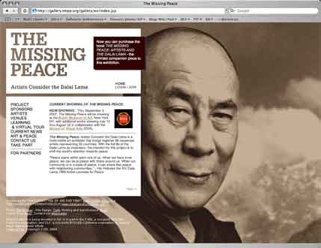 If you got to my blog via a Google, Yahoo, or (Microsoft) Live search, then you’re actually in the minority, but these days that’s how zillions of people find absolutely everything when they’re online. It’s what I call the I-forgot-the-name-of-that-site-but-I‘ll-just-bring-up-Google-and-search strategy. Over the past couple of years, specialized search engines that are focused solely on blogs have risen in prominence — and the one I pay most attention to is Technorati. Google also “knows about” blogs and your blog “places higher” in Google searches if it has lots of connections from other blogs. But, there are other such blog-search nexuses as well.
If you got to my blog via a Google, Yahoo, or (Microsoft) Live search, then you’re actually in the minority, but these days that’s how zillions of people find absolutely everything when they’re online. It’s what I call the I-forgot-the-name-of-that-site-but-I‘ll-just-bring-up-Google-and-search strategy. Over the past couple of years, specialized search engines that are focused solely on blogs have risen in prominence — and the one I pay most attention to is Technorati. Google also “knows about” blogs and your blog “places higher” in Google searches if it has lots of connections from other blogs. But, there are other such blog-search nexuses as well.
Here’s what I want to point out. The conventional wisdom from 1995 to maybe 2003, was that a web site had to keep its visitors “on the site” and never give them a chance to leave. A visitor who went off to another site was equivalent to a lost sale. So web sites jealously guarded their links and seldom contained “offsite” links (those whose targets are outside the web site). The sites that did contain “links pages” (meaning pages of reciprocal links with other web sites) were primarily those of individuals — and search engines like Yahoo.
Now today, in the blogosphere, it’s become an accepted belief that people who search for information about “X” would be interested in reading about “X” no matter whose blog it’s in. So if you’ve searched for “Dalai Lama” and gotten to my blog, the assumption is that you’d like to read other blogs that mention the “Dalai Lama.” How is that accomplished? And is it even good for me, as a blog-writer, to facilitate your going off to read other blogs?
 AMD and Intel have been aggressively-competitive for years, and both companies have announced initiatives to put inexpensive computers in the hands of students in developing nations. Intel’s Classmate is their entry (at $400) and AMD has announced its
AMD and Intel have been aggressively-competitive for years, and both companies have announced initiatives to put inexpensive computers in the hands of students in developing nations. Intel’s Classmate is their entry (at $400) and AMD has announced its 

